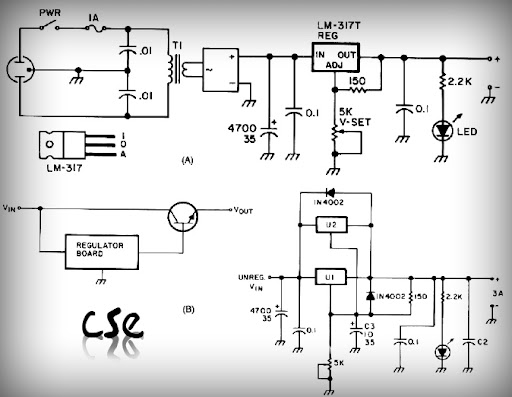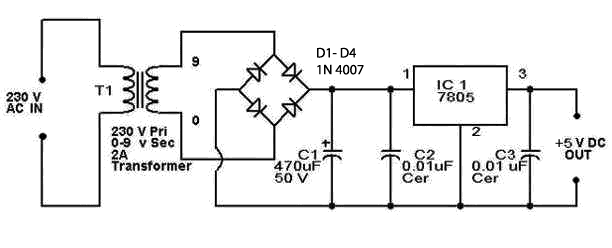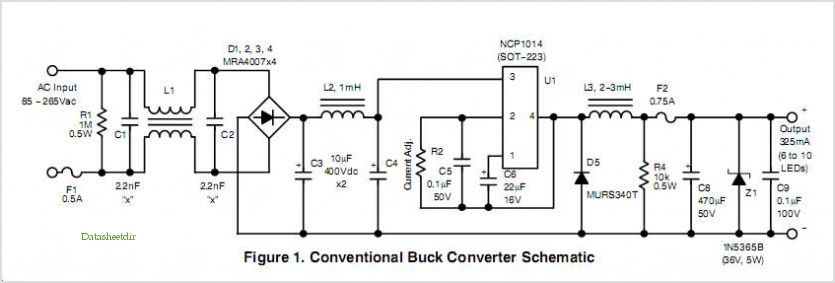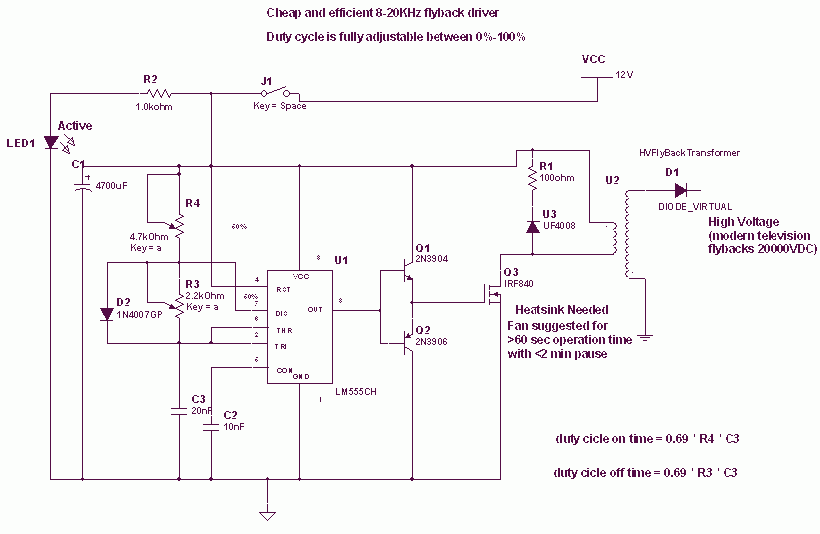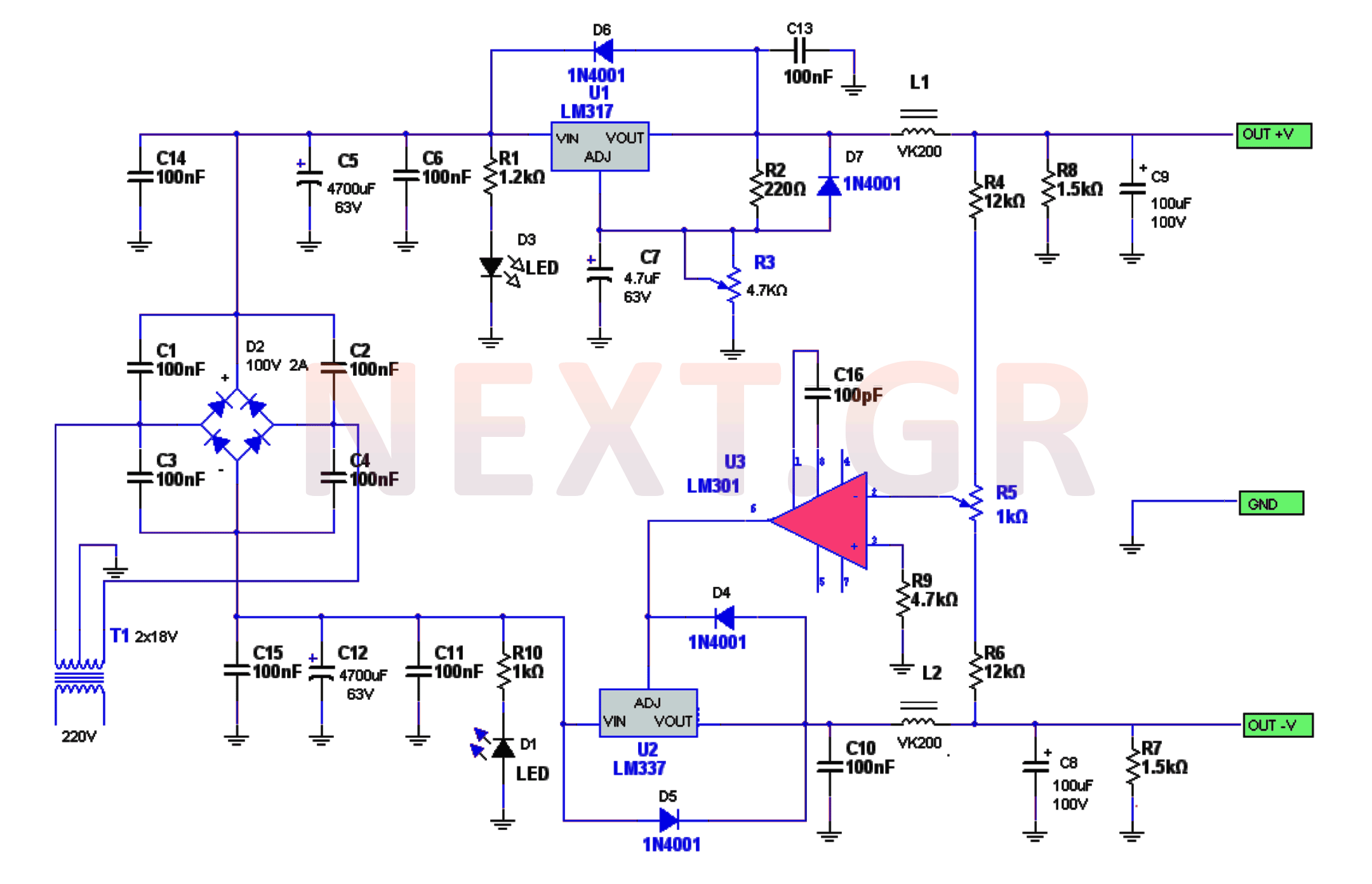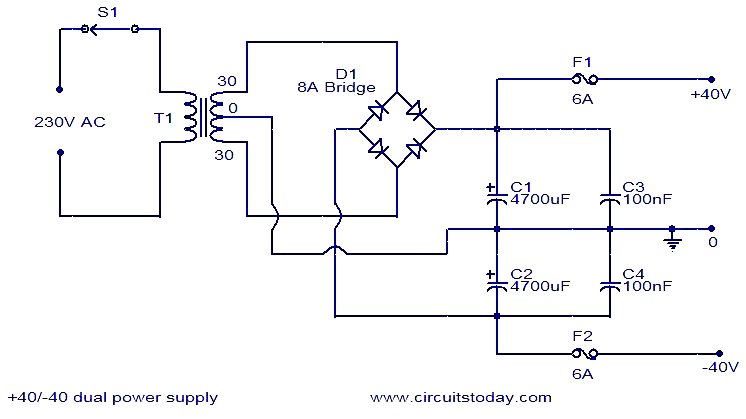
Floating 9V Supply For DVM Modules With LMC555 IC
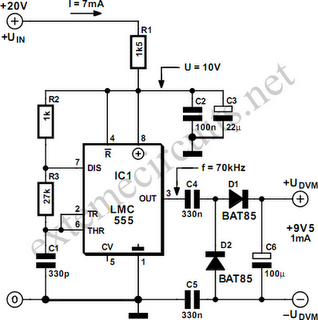
This circuit is constructed using the widely recognized LMC555 timer integrated circuit (IC). It is commonly employed in laboratory power supplies and various test and measurement equipment.
The LMC555 timer IC is a versatile component that can be configured in several modes, including astable, monostable, and bistable operations. In the context of laboratory power supplies, the LMC555 can be utilized to generate precise timing signals or to control the output voltage and current levels.
In an astable configuration, the LMC555 operates as an oscillator, producing a continuous square wave output. This is achieved by connecting resistors and capacitors to the timing pins of the IC, which determine the frequency and duty cycle of the output waveform. The output can be used to drive other circuits or components, such as transistors or relays, to control power delivery.
In monostable mode, the LMC555 can be triggered by an external signal to produce a single pulse of a defined duration. This feature is particularly useful in applications requiring precise timing for triggering events, such as activating relays or switching power supplies on and off.
The LMC555's ability to operate over a wide voltage range and its low power consumption make it suitable for battery-powered devices and portable test equipment. Additionally, the IC's internal circuitry is designed to withstand a range of environmental conditions, enhancing its reliability in laboratory settings.
Overall, the LMC555 timer IC's flexibility and ease of use make it an essential component in the design of laboratory power supplies and test equipment, allowing for accurate control and measurement of electrical parameters.This circuit built from the ubiquitous LMC555 timer IC. Are typically used in laboratory power supplies and other test and measurement equipment .. 🔗 External reference
The LMC555 timer IC is a versatile component that can be configured in several modes, including astable, monostable, and bistable operations. In the context of laboratory power supplies, the LMC555 can be utilized to generate precise timing signals or to control the output voltage and current levels.
In an astable configuration, the LMC555 operates as an oscillator, producing a continuous square wave output. This is achieved by connecting resistors and capacitors to the timing pins of the IC, which determine the frequency and duty cycle of the output waveform. The output can be used to drive other circuits or components, such as transistors or relays, to control power delivery.
In monostable mode, the LMC555 can be triggered by an external signal to produce a single pulse of a defined duration. This feature is particularly useful in applications requiring precise timing for triggering events, such as activating relays or switching power supplies on and off.
The LMC555's ability to operate over a wide voltage range and its low power consumption make it suitable for battery-powered devices and portable test equipment. Additionally, the IC's internal circuitry is designed to withstand a range of environmental conditions, enhancing its reliability in laboratory settings.
Overall, the LMC555 timer IC's flexibility and ease of use make it an essential component in the design of laboratory power supplies and test equipment, allowing for accurate control and measurement of electrical parameters.This circuit built from the ubiquitous LMC555 timer IC. Are typically used in laboratory power supplies and other test and measurement equipment .. 🔗 External reference
